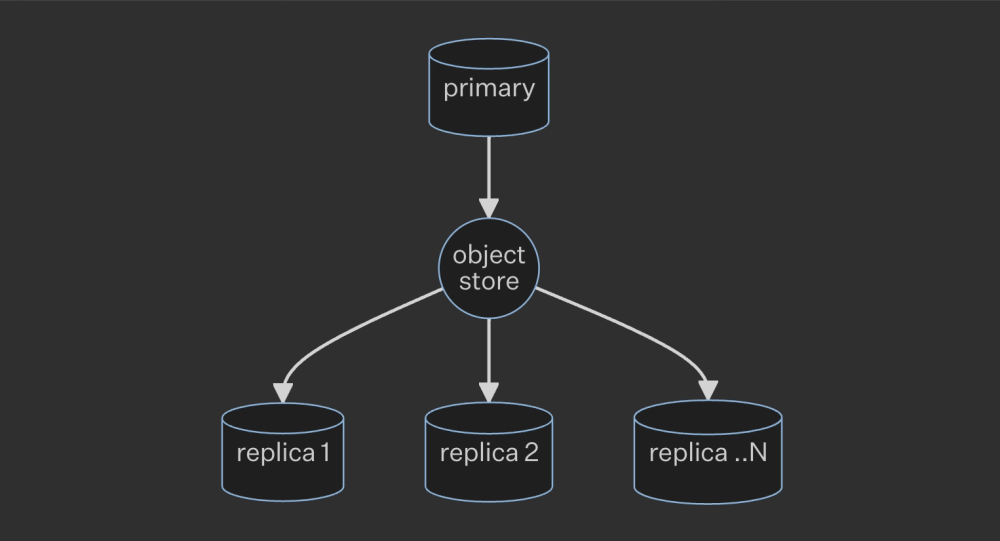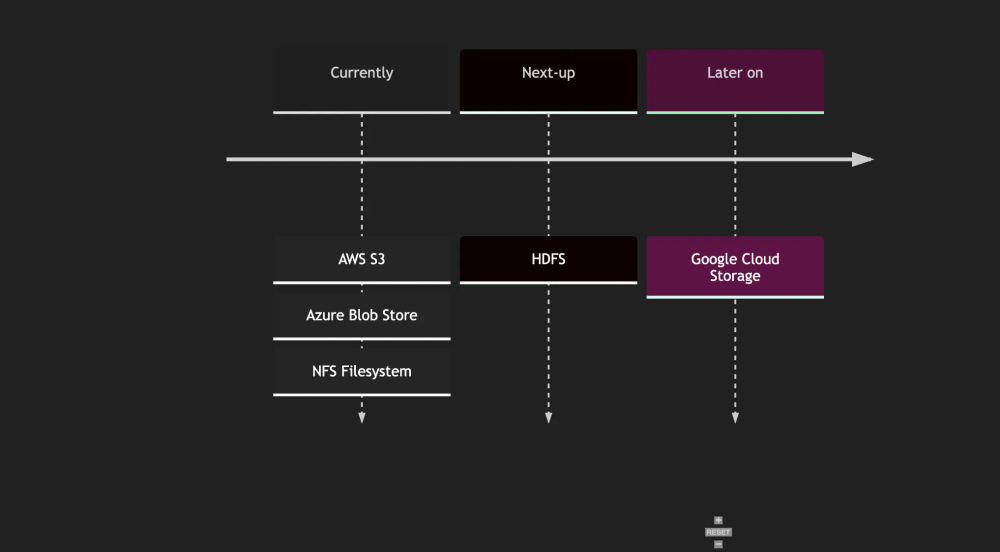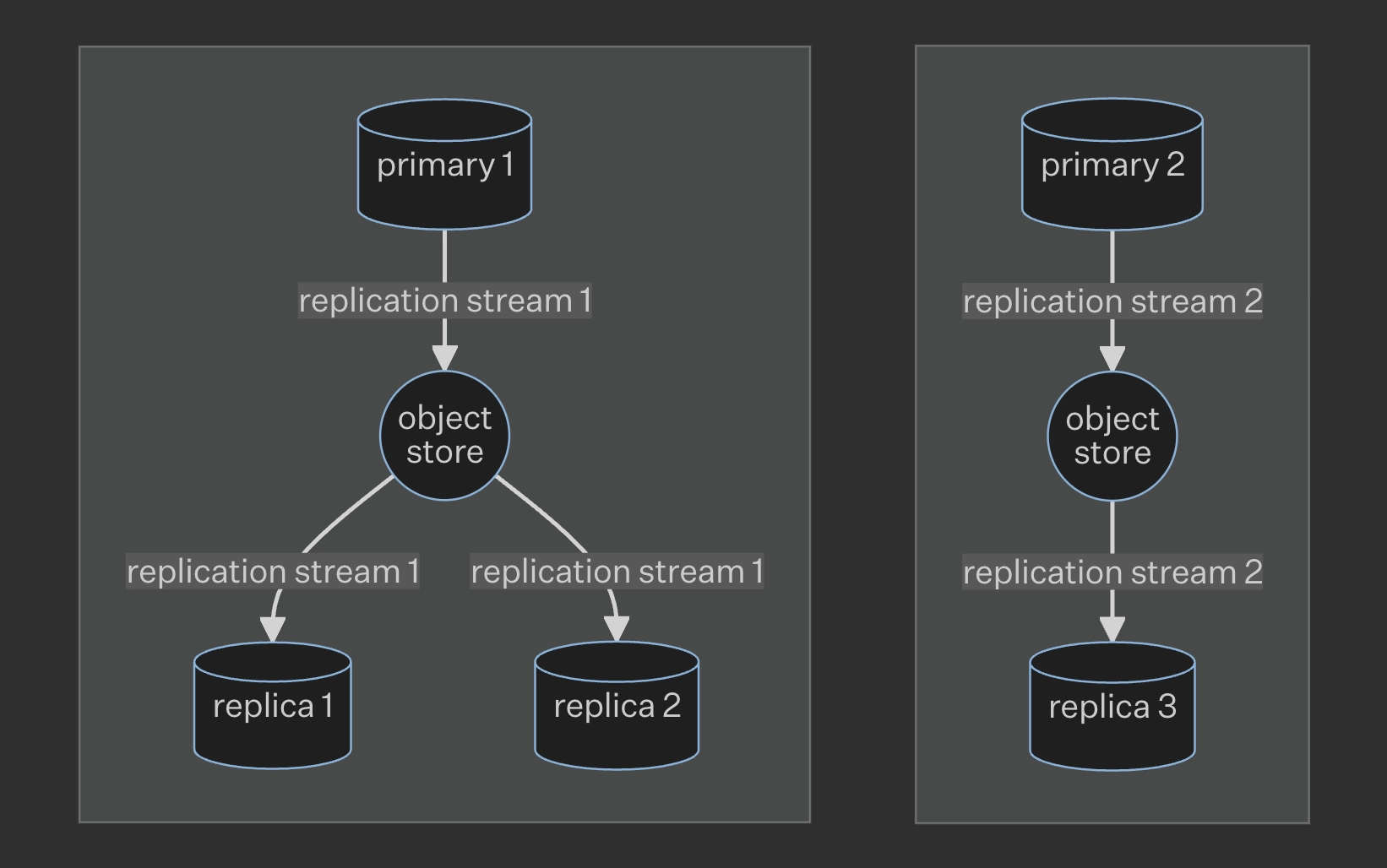Database replication concepts
QuestDB Enterprise offers primary-replica replication with eventual consistency.
This document will teach you about the architecture, some configuration, a roadmap and limitations.
For a self-hosted setup guide and configuration details, see the Replication page within Operations.
Architecture
Replication in QuestDB operates by designating a single "primary" database that uploads Write Ahead Log (WAL) files to a remote object store. These files can be downloaded and applied by any number of "replica" instances, either continuously or at a later time.
Primary instances offer the same features as stand-alone instances, while replicas are read-only, designed to distribute data and load across multiple locations and instances.
Two common storage strategies are:
-
Hot availability: A read-only replica operates alongside the primary node, enabling quick switch-over in case of primary failure. Multiple replicas can follow a single primary. It is faster and more expensive.
-
Cold availability: A new primary node can be reconstructed from the latest snapshot and WAL files in the object store, without a constantly running replica. It is slower and often cheaper.
Replicating instances communicate via the object store, and not direct network connections.
This results in a decoupled, flexible architecture with high availability.
Key benefits include:
- Replica instances do not impact the performance of the primary instance, regardless of their number
- Object store-held replication data can enable "point in time recovery", restoring an instance to a specific timestamp. This works with full database nightly backup snapshots
The architecture consists of:
- A primary database instance
- An object store, such as AWS S3 or Azure Blob Storage, or an NFS distributed file system
- Any number of replica instances

Supported Object Stores
The Write Ahead Log (WAL) object storage layer used in QuestDB replication is designed to be plug-able and extensible.
We provide native support for AWS S3, Azure Blob Storage, and the NFS distributed file system.
HDFS support is on our roadmap.
We also plan to support other object stores such as Google Cloud Storage:

Something missing? Want to see it sooner? Contact us!
Object Store Configuration
The object store is defined in the replication.object.store configuration
setting. The string requires a prefix of s3, azblob or fs followed by a
semi-colon-terminated set of key-value pairs.
An example of a replication object store configuration using AWS S3 is:
replication.object.store=s3::bucket=somename;root=a/path;region=us-east-1;.
An example of a replication object store configuration using Azure Blob Storage
is:
replication.object.store=azblob::endpoint=https://someaccount.blob.core.windows.net;container=somename;root=a/path;account_name=someaccount;account_key=somekey;.
An example of a replication object store configuration using NFS is:
replication.object.store=fs::root=/mnt/nfs_replication/final;atomic_write_dir=/mnt/nfs_replication/scratch;
See the Replication setup guide for direct examples.

In addition, the same object store can be re-used for multiple replication
clusters. To do so, provide a unique DB_INSTANCE_NAME value.
Limitations
The replication and point in time recovery features rely on the presence of a table's Write Ahead Log (WAL) and, for now, only time series tables. WAL tables have a designated timestamp column that is partitioned.
This covers all tables, except that of tables that are used for referential data (i.e. SQL JOIN operations) that don't have a timestamp. These generally tend to contain semi-static data referential data that will have to be updated and kept up to date manually and are often generally just inserted during the database tables setup phase.
This limitation will be lifted in the future.